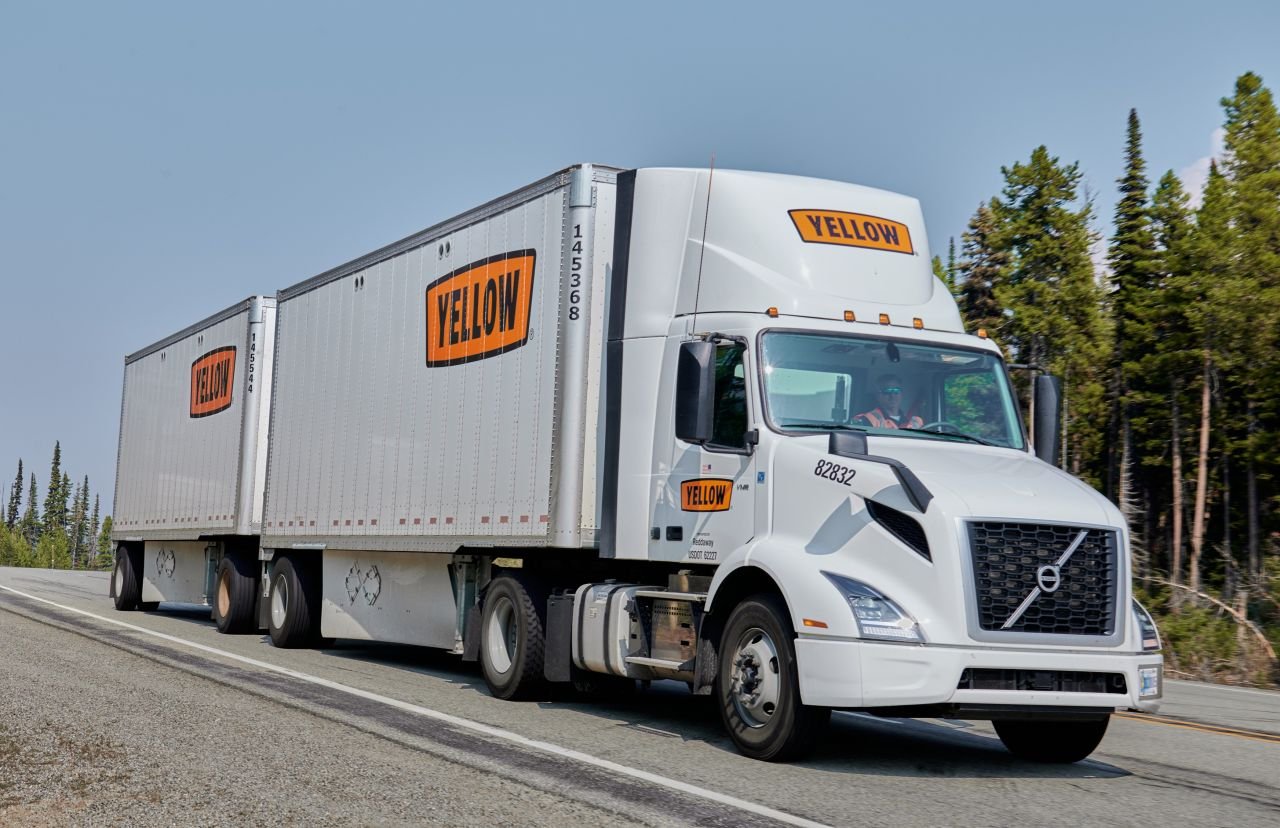How Yellow's collapse adds uncertainty to the future of freight across North America
Source: Yellow Corp. on LinkedIn
After US trucking giant Yellow announced its closure earlier last month, many workers were left in limbo, with roughly 30,000 jobs lost according to the carrier’s Teamsters union. On our side of the border, the damage appears smaller but is still considerable: over 100 YRC Freight Canada truck drivers told not to report for work that same morning.
While a US-based company filing for bankruptcy might not shake Canadians, the impact of Yellow Corp. on the North American freight market is significant. The shutdown brings a major blow to the less-than-truckload industry, with expected repercussions like consumer price hikes and delivery delays across the continent.
What made Yellow so different from other freight carriers?
With its 12,000 trucks, the company distinguished itself by being one of the largest LTL carriers on the market, right behind FedEx and Old Dominion. But what is LTL exactly? Here is a quick definition from bringg.com:
“Less than truckload LTL shipping refers to a truckload shipping method used for transporting a shipment which is larger than a parcel but light enough or small enough that it doesn’t require a full truckload. Since LTL shipments don’t use an entire truck, free space on the truck often is shared by other shipments from other shippers or carriers. [...] The LTL freight class refers to categories between 150 and 15,000 pounds.”
As if being part of a tight, competitive market wasn’t enough, Yellow also impacted with its low pricing, warding off competition and monopolizing major sectors with clients like Walmart, Amazon and Home Depot.
Despite its success for nearly 100 years, a pandemic bailout loan of $700 million dollars, a lawsuit for defrauding the government by over-billing on shipments for the U.S. military and an accumulation of $1.5 billion dollars in debt were just the tipping point of the iceberg for the company, who filed for Chapter 11 bankruptcy on August 6.
Source: Yellow Corp.
But what does this mean economically for customers?
With Yellow occupying around 10% of the LTL market, shippers now turning to larger rival carriers like Xpo or FedEx Freight might see their pricing increase exponentially, with many of them citing they don’t plan on “honouring Yellow's pricing structure as they pick up its customers”.
CFO Kyle Wismans at XPO mentioned Friday that Yellow’s shuttering is allowing its own pricing to accelerate while implementing a general rate increase and targeting contract renewals.
With a higher demand, customers can also expect an increase in backlogs and delays. Although some carriers started diverting their freight as early as June, DTA Freight & Analytics reported a 4.3% increase in trucking service requests, with 1.325 million loads posted on its network just a week before Yellow announced its closing.
A month later, can we still feel the repercussions of Yellow’s absence?
While bidding wars rage over leftover Yellow terminals, the American market still suffers from the sudden gap in LTL freight capacity and sudden layoffs.
“It leaves a hole for the consumers; it’s gonna be a while for the industry to catch up. With 12,000 trucks off the road, a single carrier won't be enough to fill the void. What’s good is it leaves space for smaller carriers to have the opportunity to grow while the market space is open. However, economically, a lot of people aren’t doing their best financially and might not have the capacity to serve Yellow’s bigger clients. All it does is give more chance to the big companies to jump in if they have the cash or investor backing; like Old Dominion bidding $1.5 Billion for Yellow Terminals.”, EFS Logistics CEO Andrew Sooben notes.
Although not directly related, the Canadian freight market has seen some major slow-downs in the past years, with many companies reporting major losses while operating costs go up. With regular cross-border freight hauls, it’s not abnormal to see the Canadian market mirror the U.S.’s.
“Both TL and LTL companies reported freight going down around Q1 and Q2 of this year, and it appears that we are in some kind of freight recession.”, Sooben adds.


